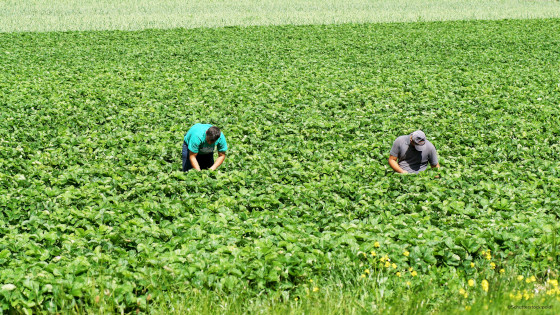Covid-19 has turned the Italian political debate on immigration upside down. On May 2020, the Italian government approved a new plan to temporarily regularise up to 200,000 undocumented migrant workers who are working or have worked in the past in the agricultural sector or as care-workers in Italy. Rather than as a threat or danger, a regularisation for undocumented migrants was framed as necessary to prevent the collapse of agricultural production and protect public health.
Proposed by centre-left parties within the governing coalition, the regularisation was eventually approved by the coalitions’ largest party, the populist Five Star Movement (M5S), despite its initial opposition.
The regularisation raises important questions about Italian immigration policy and politics: how and why the debate on regularisation emerged? How has it reconstructed the positions of the main Italian parties on the issue? And what policy dilemmas remain unresolved?
The underlying paradoxes of Italian migration politics and policies and the impact of covid-19
The regularisation followed a five-year period during which Italian immigration politics was highly politicised and dominated by a narrow focus on boat arrivals and the reception of asylum-seekers. This narrow focus was largely an effect of the radical right Lega’s effective ownership of the immigration issue, and of its leader Matteo Salvini’s capacity to shape political debate, particularly between 2018 and 2019, when the Lega was in government and Salvini was Interior Minister.
Paradoxically, after 2017 inflows of asylum-seekers returned to historically low levels and form only a relatively small sub-section of total immigration to Italy.
An effect of the politicisation of immigration was to prevent Italian governments from resolving key underlying policy dilemmas related to the increasing ‘irregularisation’ of immigration to Italy. Irregularisation was fuelled by the absence of routes for legal migration from outside the EU combined with both a supply of migrants and demand for their labour in sectors of the Italian economy such as agriculture and domestic care. Salvini’s anti-immigration “Security Decree” exacerbated the situation and led to a further increase in the number of irregular migrants.
Despite the ‘refugee crisis’ in 2015-16, in Italy as in the rest of the EU, the main political parties avoided the underlying policy dilemmas. Since its formation in September 2019, the government led by Prime Minister Giuseppe Conte, founded on a heterogeneous coalition between the centre-left and the M5S, preferred to avoid the immigration issue and did not make good on its initially declared intention of amending Salvini’s Decrees.
The Covid-19 pandemic meant that many foreign workers in Italy were left to fend for themselves without basic protection against Covid-19 in rural ghettoes predominantly in Southern Italy where the caporalato (gangmaster) system based on the illegal recruitment of (mainly migrant) workers for agricultural labour with low pay and often slavery-like conditions is particularly widespread. Their undocumented status clearly discourages any communication with local authorities about potential Covid-19 cases.
At the same time, the Italian agri-food production and distribution, which relies heavily on the employment of seasonal migrant labour force, was affected by the closure of European borders, particularly those with Eastern Europe that choked off routes for seasonal workers.
The farmers union Coldiretti estimated a potential shortage of 200,000 seasonal workers while others put the number at 370,000. An employer survey revealed that 40 percent of agri-food companies were experiencing labour shortages. Food production losses, coupled with an increasing demand for fruit and vegetables during the lockdown led to significant increase in food prices.
This is a part of a blog post by Andrea Pettrachin.
